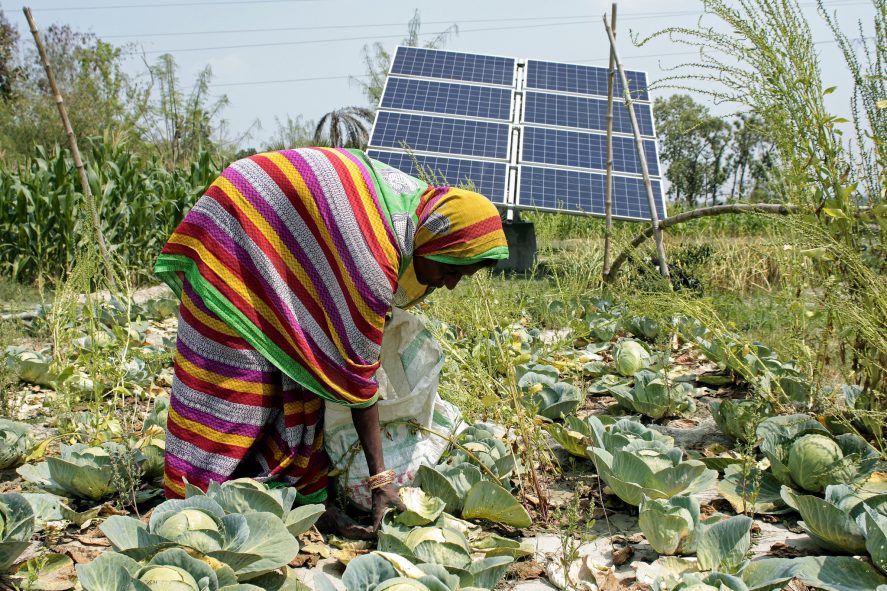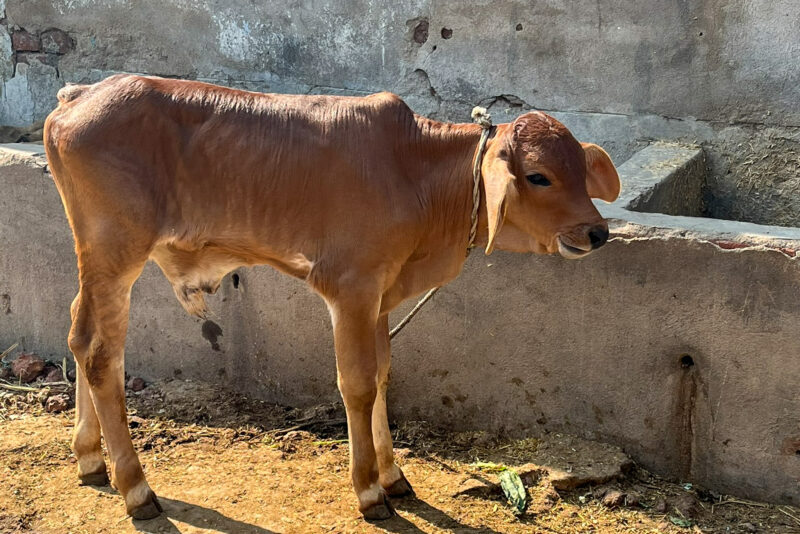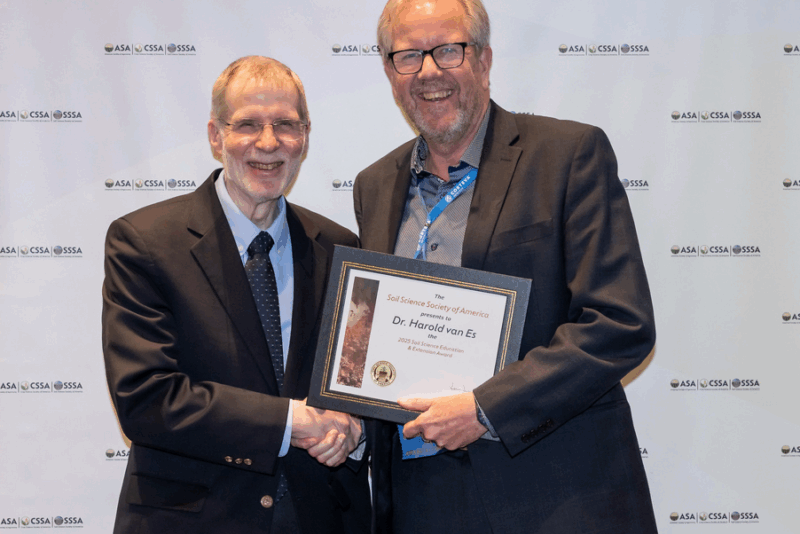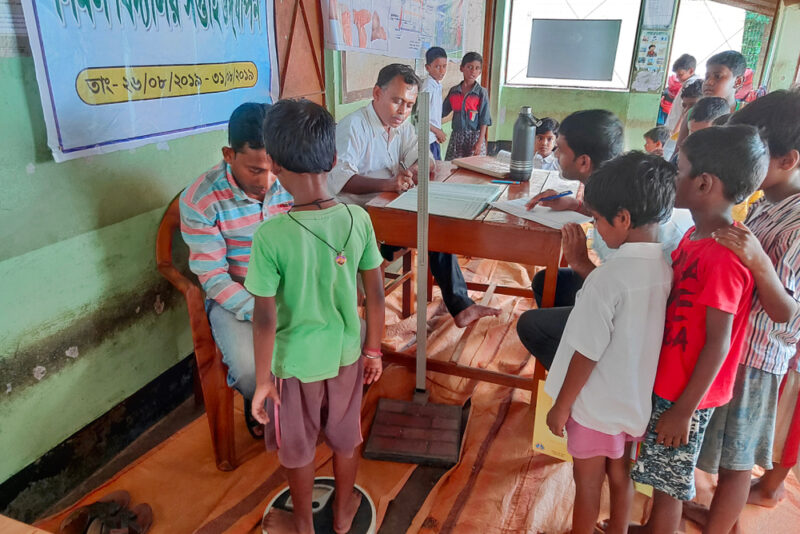Expert Panel Addresses Agriculture and Climate Change in India

A panel of experts at a webinar hosted by the Tata-Cornell Institute for Agriculture and Nutrition (TCI) on Tuesday, February 15, spoke about the links between agriculture and climate change and the potential to create zero-hunger, zero-carbon food systems in India.
“How do we get to our zero-hunger goal while at the same time being able to achieve or make progress towards our zero-carbon goal?” TCI Director Prabhu Pingali asked at the start of the event. “I think there are enormous opportunities for getting there.”
The webinar was part of TCI’s Zero-Hunger, Zero-Carbon Food Systems project, which aims to reduce the greenhouse gas emissions associated with agriculture in India while also maintaining farm productivity. Speakers included Pingali, NITI Aayog Union Minister of State Ramesh Chand, Borlaug Institute for South Asia Regional Program Team Leader Pramod Aggarwal, TCI Faculty Fellows Harold van Es and Andrew MacDonald, Cornell University Professor Mario Herrero, and BAIF Development Research Foundation Trustee and Principal Advisor Girish Sohani. Pingali, van Es, MacDonald, and Herrero are members of the project team.
Citing agriculture’s position as both a contributor to and casualty of climate change, the speakers agreed that there is a need for both mitigation and adaptation strategies to decrease farm emissions while also making farming more resilient to the effects of a changing climate. Aggarwal noted that climate-related losses among some crops, including potatoes, onions, and cotton, are already high. Production of all crops will decrease due to climate change, he said, but with currently available technological adaptations, many of those shortfalls can be recouped.
The speakers discussed how mitigation and adaptation strategies should be targeted but also comprehensive, given the interrelated aspects of food systems. Aggarwal advocated for assessing the risks posed to different crops or livestock by region to develop targeted strategies. “If you do this type of analysis, you can understand how to target your technology and where different strategies should work,” he said.
Herrero noted that while livestock production is a significant contributor to emissions, the sector also stands to sustain heavy losses due to increased droughts, flooding, and heat stress on animals. “Trying to achieve both adaptation and mitigation at the same time will require very smart practices that we can actually implement and that can help us deal with both aspects at the same time,” he said.
Van Es listed several cost-beneficial prospects to reduce emissions. One opportunity, which would also improve yields, is the timely planting of rice in rice-wheat systems, since late planting results in decreased productivity and increased irrigation needs. Sohani expressed support for introducing circular economies, mentioning a BAIF project that makes cattle feed out of the remains of cotton plants that would otherwise be burned. Chand spoke in favor of agro-climatic regional crop planning, which entails the promotion of crops that are suitable to the natural resources of the local environment.
“How do we get to our zero-hunger goal while at the same time being able to achieve or make progress towards our zero-carbon goal?” TCI Director Prabhu Pingali asked at the start of the event. “I think there are enormous opportunities for getting there.”
Meanwhile, Herrero stressed that strategies must be assessed at the production system level, as one specific agricultural practice can have many repercussions on the entire system. He also cautioned that pushing mitigation efforts too hard could drive food prices up and increase food insecurity.
Not all were fully sold on the idea that agriculture should be a priority in efforts to fight climate change. India’s commitment to curb emissions under the Paris agreement does not specify reductions by economic sector, and Aggarwal noted that the energy sector is the biggest contributor to the country’s overall emissions. While NITI Aayog is supportive of zero-carbon food systems as a long-term goal, Chand said that current trends make achieving that goal difficult without limiting production in the short term. For example, consumer demand is rising for emissions-heavy livestock products as well as off-season fruits and vegetables that require more resources to grow.
MacDonald commented on several preconditions for creating zero-hunger, zero-carbon food systems in India, including mapping cropping systems to better understand where emissions are concentrated, challenging orthodoxies around intensification and emissions, effectively promoting the adoption of new and existing technologies, and considering multiple impact pathways.
Pingali and Sohani advocated for an intersectoral approach to the issue that sees efforts to reduce agricultural emissions as part of a broader endeavor. An example of this is solar power, which both Chand and Aggarwal spoke in support of as an effective tool for both cutting emissions and helping boost agricultural productivity.
Pingali argued that the government needs to approach climate and food security as interrelated matters requiring a convergence of policies across the various ministries that work on each issue.
“As long as we’re in these sectoral silos it becomes very hard to create that convergence and look for opportunities for reducing tradeoffs and increasing synergies,” he said.
Feature image: A woman harvests cabbages in a field watered using solar-powered irrigation pumps. (Photo by Ayush Manik/CGIAR Climate (CC BY-NC-SA 2.0).)





